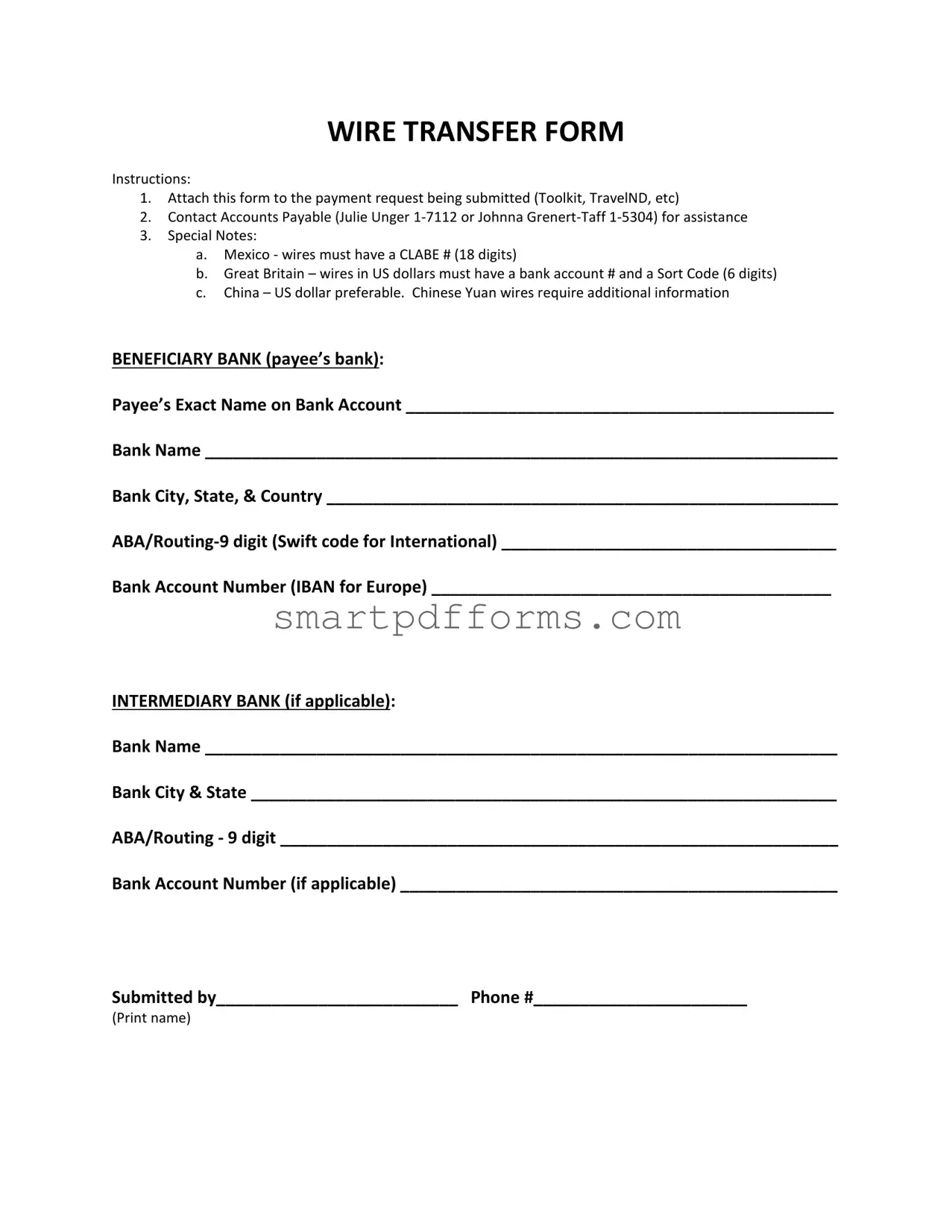Blank Wire Transfer PDF Template
A Wire Transfer form is a critical document that facilitates the electronic transfer of funds between banks or transfer services, ensuring that money reaches its intended recipient securely and efficiently. This form captures essential details such as the beneficiary's bank information, the intermediary bank (if applicable), and specific instructions regarding the currency and special requirements for certain countries. To streamline your financial transactions and ensure a smooth process, follow the instructions for completing the wire transfer form, and click the button below to fill it out now.
Make This Document Now
